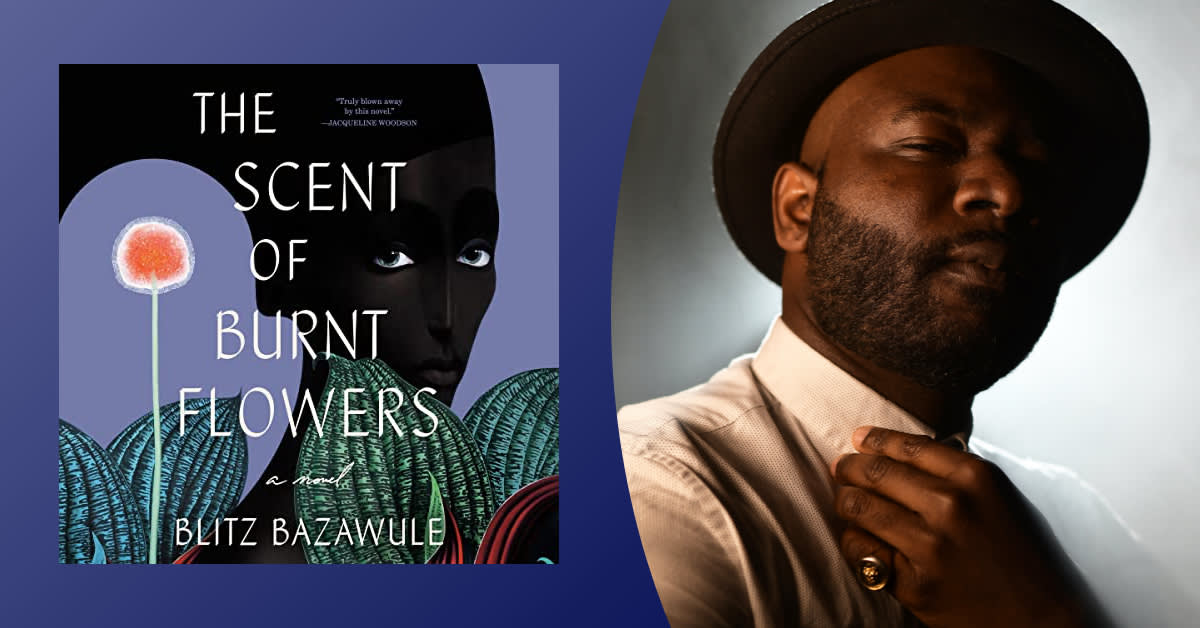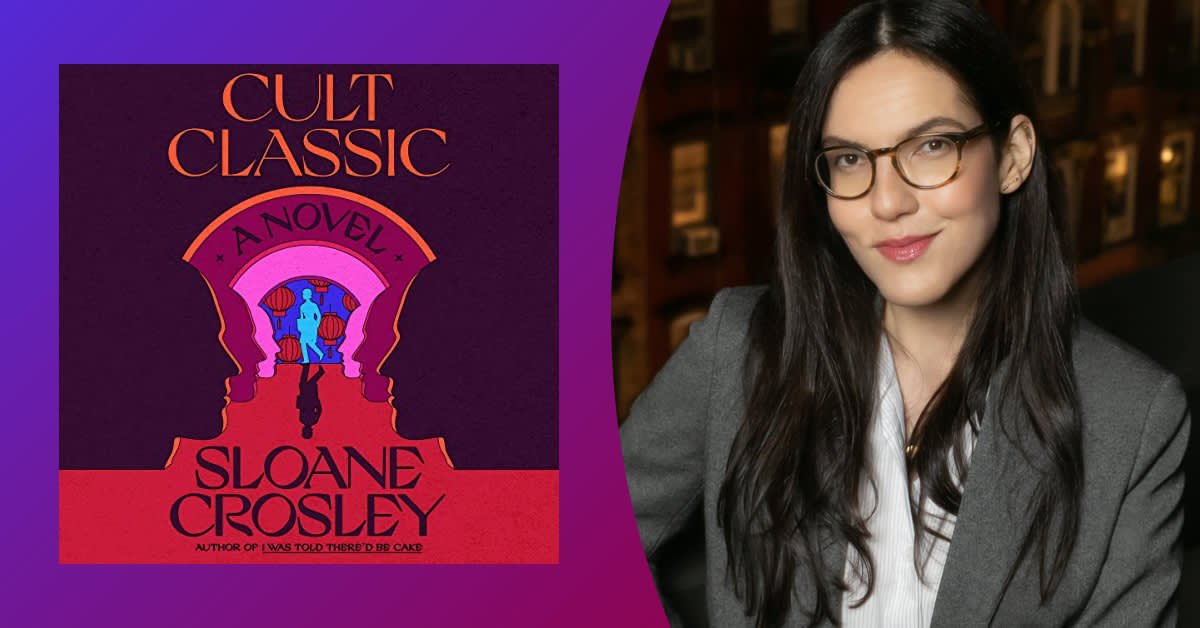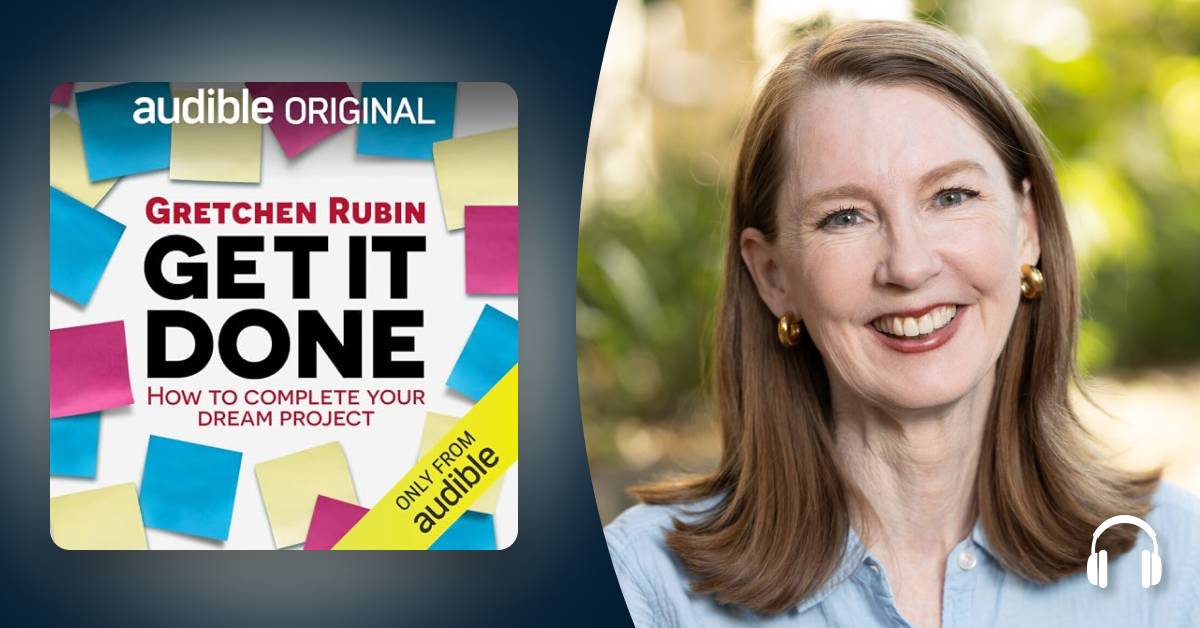In Gabrielle Zevin's ambitious new novel, two childhood friends and gamers, Sam Masur and Sadie Green, reconnect in college and against the odds end up bootstrapping a video game that becomes a blockbuster. Spanning 30 years, Tomorrow, and Tomorrow, and Tomorrow is about this life-changing success and everything that comes after, including heartbreak, disappointment, and the occasional tragedy.
Audible: Hokusai’s The Great Wave off Kanagawa is a famous work of art and a familiar image to many of us. How did it become the cover art of your novel? Was this something you had in mind while writing? Did the idea come from you or from someone else?
Gabrielle Zevin: No one asked for my input about the cover. It just showed up in an email from my editor, Jenny Jackson, and I replied, “This is perfect,” and that was that. Having been a novelist for a long time, I should tell you that this rarely happens. And yet… when I was writing the novel, I once dreamed the cover, and it looked very close to this. So, I think John Gall, the cover designer, must have crawled into my dreams. (I still have never spoken to him.)
When I sold the book, I posted a picture of The Great Wave off Kanagawa on my website—it is central to the story, and I wanted to give readers some clue regarding my new book’s contents. Anyone visiting my website might have thought I had already seen the cover, but this was six months before the cover even existed. At one point, the characters in the book discuss how The Great Wave is iconic to the point of being somewhat shopworn (it is described in the book as hanging in every dorm room in 1990s), so for this reason, I don’t think my waking self ever truly believed it would become the jacket’s imagery. The way the imagery is recontextualized by the 8-bit style type makes the whole thing feel incredibly fresh to me. When I look at the jacket, it feels exactly right. I love the mix of elements that evoke different eras and technologies.
Similar to how the cover art comes from a famous work of art, but even more integrated into the story, is your book's title. Tomorrow, and Tomorrow, and Tomorrow is a famous line from Shakespeare’s Macbeth and a profoundly depressing one at that, but there seems to be a very different connotation for you. What’s the connection, and where do you diverge from the Bard?
The character who invokes the title in the novel is Marx, and I will begin by saying he is the character who many early readers seem to like the best. He is also the character who is the least like me. Marx finds optimism in the “Tomorrow…” soliloquy, and if I weren’t inhabiting his POV, I doubt I would have come to his interpretation. And that is why it is nice to be a writer: sometimes your characters are more optimistic than you are. In the context of the play, Macbeth is struck with the futility of existence after the death of his wife. The soliloquy is depressing but incredibly beautiful—it’s one of the first bits of Shakespeare I ever committed to memory.
Marx finds great hope in Macbeth’s soliloquy—the idea that every day we are alive is a chance to try again—and a metaphor for playing video games, with their infinite restarts and their chances at redemption: “What is a game?” Marx said. “It’s tomorrow, and tomorrow, and tomorrow. It’s the possibility of infinite rebirth, infinite redemption. The idea that if you keep playing, you could win. No loss is permanent, because nothing is permanent, ever.”
Still, when Marx is making this argument, he's trying to convince his colleagues to name their company Tomorrow Games (as an homage to this soliloquy), so it is debatable how much Marx believes this interpretation or how much is salesmanship!
“That is why it is nice to be a writer: sometimes your characters are more optimistic than you are.”
Stories about video games often incorporate retro pop-culture references, which you do here as fitting for your characters and the timeline, but you also throw in literary references that may not be quite as obvious. What can you give us as a kind of “Easter Egg” to keep in mind as we listen to the story?
I’ll name a few!
The epigraph of Tomorrow, and Tomorrow, and Tomorrow comes from my favorite Emily Dickinson poem, “That Love is all there is.” I love this poem because I can never quite wrap my head around it. It begins with a riddle about love, which it then solves with a machine-based metaphor—much like my book, except in four lines! The title of the final section of the book, “Freights and Grooves,” is a reference to this poem, and I think it will be interesting for a reader to think about the various meanings of those words as they are used in this section. The work of Emily Dickinson appears in many places throughout the book—Sadie’s first game, Emily Blaster, is, of course, based on Dickinson’s poems.
In terms of Shakespeare, this novel, like Macbeth, is also the story of a childless marriage and of professional ambitions. You can look for bits of Macbeth in Sam and Sadie’s collaboration—e.g., the reality distortion field that a successful partnership requires. There are also at least two productions of Macbeth during the novel, and one of these productions will occur as part of a game called Master of the Revels, which is another Shakespearean-era reference. The book also has large and small references to Hamlet, Twelfth Night, and The Tempest.
References to Homer’s The Odyssey and The Iliad appear throughout the book. The most important one to listen for is “the tamer of horses,” which refers to the last scene of The Iliad. Homer ends the epic with a description of the burial of Hector in which Hector is called “the tamer of horses.” It’s really moving and unexpected, in a way, and the idea of a “tamer of horses” is linked with one of the main characters in Tomorrow. In addition, Dov’s game engine is called Ulysses, and his son is Telemachus.
One of the central themes explored in this story is the power of collaborative work in the creation of something—video games, in this case. While writing a novel is typically a solo pursuit, aspects of the process can be collaborative. This is certainly the case when it comes to the audiobook. What did you look for when casting the audio? What did your collaborators bring to the storytelling?
I had several discussions with the audiobook producer, Orli Moscowitz, about the best way to divide up the text—whether one narrator could meet the demands of the entire book. Orli truly wanted to understand how I saw the book in my head. I explained to her that one of the sections really is Marx, and Orli decided we needed to use a different narrator for this section to better reflect my authorial intention. This is what led us to Julian Cihi. Funny enough, I think Orli and I became friends in the process—insofar as when I was sent this question, I emailed it to her to see what she would say!
In terms of casting, the book is about a diverse group of people: Sam, like me, is half Korean and half Eastern European Jewish; Marx is Japanese and Korean American; Sadie is a woman and Jewish American. There are many other kinds of people in the book as well, because that is my book’s world and not coincidentally, the world I live in. Orli and I both wanted an audio cast that reflected the book’s diversity and would also bring a real emotional depth to the story. When I was listening to samples, I would sometimes say to Orli, “Tell me what you hear that I’m not hearing.”
I also enjoyed collaborating with Christina Rooney, Tomorrow, and Tomorrow, and Tomorrow’s audiobook director. She and I discussed the ways a person might use silence and pace to control other people—I suspect you’ll hear this in the Dov character. She described how she would direct Jennifer Kim to get super close to the mic, so that one of the sections of the book would feel like Sadie’s actual voice and particularly intimate. Audiobooks are not my world, but I think they are fascinating. I’m excited to hear the results!





